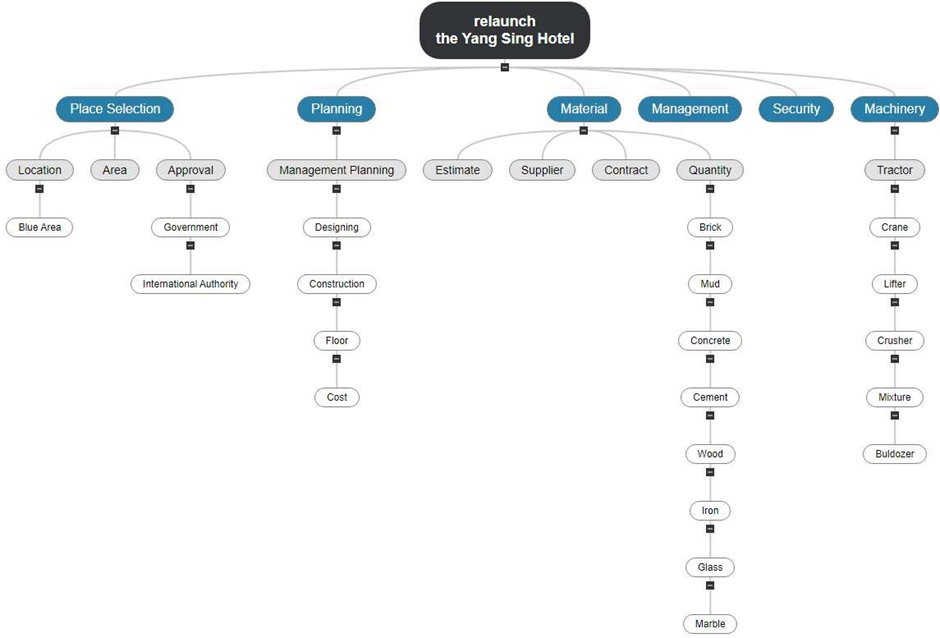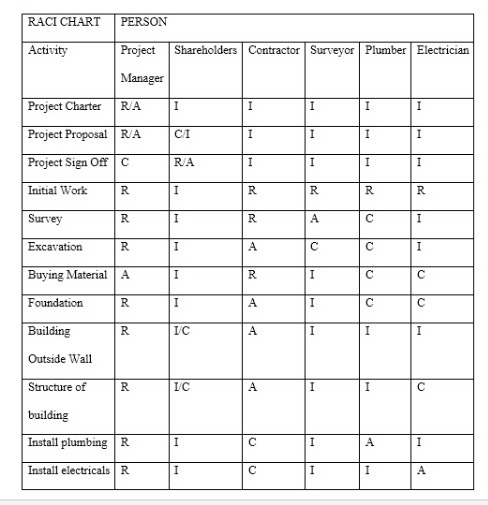Executive Summary
This article explores and reports on the projected New Yang Sing Hotel project and the benefits and cons of running a premium luxury resort in a prominent location in Manchester’s China Town district. Investors in the property are worried about the difficulties that led to the Yang Sing Hotel’s demise and demand a particular emphasis on project management concerns, which contributed to the downfall of the luxury hotel. It will include preparing for significant aspects such as monetary losses, missed deadlines, and the inability to meet the project’s performance standards requirements to avoid a similar event. This study focuses on the planned rebranding’s business case and project strategy by assessing the possible risks related to the hotel’s location, competition, the local market, and productivity in the potential customers and location. It also examines the Yang Sing Project’s planning issues and advises using project management techniques to alleviate these difficulties. Research shows that the Yang Sing Hotel’s planned relaunch is possible, concentrating on the management style, people needs, resource allocation, and identified key areas that strengthen the business case.
Introduction
The Yang Sing Oriental Hotel in Manchester was a premium hotel that offered a distinct cultural adventure and an online reservation platform. According to the case study, Yang Sing Hotel was forced to close its operations after only about eight months in business. One of the project’s key planning flaws was that the investors neglected to account for the prospect of a global economic recession. At the crisis’s onset in mid-2008, significant economies globally, most notably the United States and Europe, had entered a recession (Heilemann, U., & Schnorr-Bäcker, 2017). The second important issue with this initiative was the firm’s reliance on a single commodity, premium hotel services; if the management had applied project management strategies, they might mitigate these issues (Al-Hajj & Zraunig 2018). If the stakeholders had anticipated the recession and expanded their product offerings to fulfill the needs of a diverse customer base without sacrificing quality, Yang Sing Oriental would have stayed open throughout the recession. This project aims to create a project plan strategy that investors will use when relaunching the hotel.
Mission and Objectives
Mission
The project’s mission is to create, develop, and manufacture the industry’s most advanced highest, quality of hospitality combined with innovative services and amenities at market-related prices to its intended audience.
Objectives
The project’s primary purpose is to guarantee that the hotel strengthens its position in the local and national markets while also achieving worldwide renown. To do this, the hotel plans to provide wellness and spa services that will provide business and leisure clients with anti-stress meditation and well-being treatments conducted by highly-skilled therapists. These services will be supplied by using the already-constructed and equipped hotel infrastructure. The hotel’s idea will seek to capture the predetermined Eastern style and include future upgrades consistent with this style and of five-star quality, in keeping with the hotel’s luxurious nature. The objective is to increase restaurant reservations by targeting customers with mobile devices and computers and accessing the Internet.
Stakeholder Management Plan
Stakeholder management is crucial to this project because it assists in determining the level of attention paid to each stakeholder based on their involvement in the program. Stakeholder management is the process of systematically identifying, analyzing and planning activities to interact with, negotiate with, and influence stakeholders (Eskerod & Jepsen, 2016). The stakeholder management process is a simple yet effective method for managing stakeholders from identification through analysis, planning, and interaction.
Project Sponsors
The project manager may categorize all critical stakeholders according to their authority and interest in the project through the stakeholder management process. The first category includes stakeholders who wield considerable authority and vested interest in the project (Nimeh et al., 2018). These stakeholders are the project’s sponsors, and they should get enough attention. Their perspectives should be considered while establishing and implementing the strategy (Radujkovi & Sjekavica 2017). The team responsible for establishing and implementing the strategy will ensure that the project sponsors are informed about the project’s development and comfortable with the actions taken at every step of the project’s implementation.
Government Law Officials
The second group includes stakeholders with considerable influence but little interest in the outcome. These people can affect the project’s development yet have a vested stake in the project’s success (Sunder, 2016). This category includes government individuals responsible for enforcing laws and rules governing the hotel business (Hassani, 2016). The management should work closely with these government authorities to ensure that everything is carried out under the country’s legal standards.
Customers
Additionally, customers come within this group. Their enthusiasm for the project may be poor due to a lack of concern for its profitability. They are, nevertheless, strong since the hotel’s survival is contingent on their recurrent visits. For instance, most hotel guests are vacationers and business travelers (Dolnicar et al., 2017). Thus, it is assumed that the client category has some price sensitivity flexibility since most of them spend one or two nights with the firms paying their bills (Müller, 2017). Since consumers, particularly tourists, have a lot of purchasing power, they are not location-bound and are willing to go a few miles farther; the project manager and other stakeholders must engage them to guarantee they become loyal to the firm.
Employees
This group includes stakeholders with less influence but a high level of interest in the project. While these people cannot alter the regulations that govern the firm’s operations, they have a personal stake in its success (Müller, 2017.). This firm’s employees fall into this group. They are dedicated to assisting their employer in successfully safeguarding their employees. They should also be involved in decision-making since they will be carrying out most of the project’s obligations.
Work Breakdown Structure
A work breakdown structure (WBS) is a visual, structured, and milestones representation of a project. It is an advantageous flowchart for project managers since it helps them to deconstruct the breadth of their projects and visualize all of the actions required to complete them (Zecheru & Olaru,2016). The work breakdown structure chart summarizes each stage of a project initiative, rendering it a critical component of project planning. Project managers use a WBS for various purposes, including establishing the project schedule and creating a Gantt chart. The WBS diagram for relaunching the Yang Sing Hotel is represented in Appendix 1.
Resource Assignment Matrix
A resource assignment matrix (RAM), often referred to as a RACI chart or RACI matrix, is a tool used in project management that recognizes all key stakeholders and describes the tasks and functions of cross-functional teams, as well as their level of participation in a project (Suhanda & Pratami, 2021). RACI is an abbreviation for Responsible, Accountable, Consulted, and Informed, with every character representing a team member (Suhanda & Pratami, 2021). Throughout a project, all stakeholders should refer to a RAM in project management since it assists in planning an individual’s tasks and responsibilities before the start of work. The RACI matrix for this project is represented in Appendix 2.
Cost Estimation and Allocation
As a result of the linkage with different hotel standards, it was determined that the room equipment would be comparable to that found in other similar sector hotels. A five-square-meter bathroom with a basin, toilet, and shower will be included. The room will have a master suite or two standard-size beds, a workspace, a dresser, and a television. This is compatible with the three-star hotel standard. The average cost of constructing a conventional hotel room is around $97,043%. (Levy, 2018). This statistic is determined by multiplying the fixed price by the number of rooms; this includes land and room equipment costs. The estimated cost of around 120 rooms is approximately $12,000,000. The basic data on how this allocation will be done is in Appendix 3.
Construction Cost Estimates
A bottom-up method is employed to determine the maximum building area permitted and the laws governing the maximum facility height. Since this is a pre-constructed location, this has little effect on the project’s cost. However, refurbishment is required to remain competitive in today’s market and meet project goals (Levy, 2018). The cost estimation for this is illustrated in Appendix 3 to 9.
Finishing and Inventory Costs
The part would be incomplete without factoring in inventory and finishing expenditures (plumbing, electricity, closets, beds, television, heating, toilet, and kitchen equipment). An extra $4 million is expected to cover inventory costs.
Depreciation on Investment
The government’s tax law provides for a 4% depreciation rate on the company’s land and buildings. The maximum proportion of inventory that may be held is 25% (Levy, 2018). Thus, using a time axis. This is illustrated in Appendix 10.
The Best, Moderate, and Worst Revenue Calculation Scenarios
Potential consumers will have access to 120 rooms at the hotel. The capacity utilization ratio is 35%, based on the five-year average in the mild instance (Eskerod &Jepsen, 2016). Regrettably, it is limited to the preceding five years. The rate for a bed varies by around 4.2 points between the lowest mean value and the highest benchmark rivals’ pricing. The capacity utilization percentages in the best- and worst-case scenarios are approximate, with a 5-percent margin of error in each case (Eskerod &Jepsen, 2016). The margins indicate potential purchasers and bargaining ranges; the more significant the margins, the better the renter’s position in future negotiations. (Du et al., 2018). These are as represented in Appendix, 11, 12 and 13.
Timeline Schedule and Milestones
Timeline Schedule
A project timeline schedule is a chronological summary of a project’s deliverables. It outlines the steps that must be accomplished before new work can begin and keeps everything running smoothly (Du et al., 2018).This is represented in Appendix 14.
Project Milestone
A milestone is a moment in developing a project that denotes a change or stage. Project Milestones are critical components of project management since they highlight significant events and provide insight into its development. The Project Milestones for this project are listed below.
- Obtaining the necessary financing from the shareholders
- Permit for renovation has been approved.
- Appointment of consultants
- Finalizing design phases of the renovation
- Organizing project tracking committee
- Approval by the client
- Permissions Security
- Tendered Contracts for Construction
- Appointing a contractor
- Transfer responsibilities to the contractor
- Commencement and Completion of the Construction
- Taking up residence
- Advertising
- Follow-up actions.
Risk Management Assessment
Risk Assessment
The risk assessment for Ying Sang is as follows.
Technology Change
Rapidly evolving technology has established a foothold in the hotel business to enhance the client experience. This technology encompasses anything from online bookings and room alteration prior to the client’s arrival to more sophisticated technologies like artificial intelligence and robotics in the hospitality industry.
This technology is used in most hotels to reduce human danger and protect customers’ privacy and data (Yang et al., 2020). The hotel industry suffers from one of the most strict privacy and security breaches since personal information such as names, addresses, and credit card numbers are exposed and an easy target for hackers. This high-risk security strategy has a considerable danger of undermining customer trust and clientele.
Economic Environment Uncertainty
This is a risk inherent in the hotel industry and includes harsh tax laws, immigration regulations, economic slowdowns, and recessions, resulting in high loan rates and poor investment returns. Additional economic risks include limits on travel and diseases such as the coronavirus pandemic (Harding et al., 2016). While such threats are uncommon to occur, their severity is severe when they do. Economic risks will influence the whole sector, including competitors, with the primary differentiator being the financing employed by particular firms.
Debt Financing
Debt financing affects the company’s net income and cash flows owing to interest payments. This will affect the hotel’s operations and prevent the management from using alternative management and marketing tactics such as discounts and providing pricing below market rates. Additionally, it will raise the debt-to-equity ratio and diminish its profitability (Heilemann & Schnorr-Bäcker, 2017). The situation will deteriorate further if there is an economic catastrophe. This risk is somewhat likely to occur and will have a moderate effect on the property.
Recruitment of Staff
The Yang Sing Hotel has carved itself a niche in the industry by giving an unmatched level of comfort to Asian consumers. This presents a distinct risk for personnel, given the hotel industry’s reliance on client experience and human interactions. Hiring the proper people for catering, cooking, and other services in the Manchester region may be challenging. In addition to being highly qualified and competent, such workers will need to possess a rich Middle-Eastern culture and variety to provide a welcoming atmosphere for tourists (Heilemann & Schnorr-Bäcker,2017). Hiring the incorrect personnel is a high likelihood and effect risk since it is crucial to the hotel’s operations.
Risk Management
The following are the approaches to risk management.
Technology Change
The project managers should spend significantly on acquiring better technologies with robust security solutions to safeguard client data. The initial stage will identify sensitive data, such as guest schedules and personally identifiable information, such as email addresses, physical addresses, and credit card numbers (Kiznyte & Dechange, 2016). When establishing security and information systems, guest profiles should also be addressed. The second stage will be to identify reliable information technology This will comprise the processes necessary to determine the hotel’s optimal administration and functioning system (Kerzner, 2018). Finally, management will define priorities for the data that require the most excellent protection and protocols and vendors (Lock, 2017). clearance levels for getting client data and access to hotel online systems. Other efforts will include benchmarking and pilot studies to determine the current technology utilized in the hotel business to deliver the finest in the market.
Economic Environment Uncertainty
Economic uncertainty is one of the most challenging aspects of launching a new endeavor. This is because several elements affect and determine economic volatility. As part of the action plan, the project’s management should analyze all current economic developments, including stock prices and the hospitality index, as well as inflation, bank rates, and government regulations (Meredith et al., 2017). Additionally, economic crises and terrorist concerns will hurt the hotel business. Following these assessments, management should develop a risk assessment and mitigation profile, categorizing hazards according to their severity and ease of mitigation. Additionally, the corporation should invest in less volatile assets to protect the hotel from economic hazards.
Debt Financing
This method of financing the project entails the utilization of a loan. Before obtaining bank loans, management should examine alternate sources of money for the project. This may involve employee stock options and private financiers and investors (Du, Wu & Zhao, 2018). This reduces the interest paid on the bank loan and allows the investors to agree on a more flexible payment arrangement depending on the hotel’s market success.
Recruitment of Staff
This will be accomplished most effectively via a comprehensive recruiting drive. The hotel should first define its recruiting goals and policies, ensuring that they correspond with the project’s objectives. The recruiting procedure will then define each employee’s and personnel’s tasks and responsibilities. The hiring process should prioritize competence, professionalism, experience, and inventiveness (Nestoroska & Petrovska, 2014). Following that, the firm should invest in the training and development of its personnel to guarantee that the Yang Sing Hotel’s visitors get the most satisfactory service possible. These enhancements and training will enhance compatibility with Asian culture, cuisine and nutrition, and accommodation methods.
Conflict and Strategies
A communication breakdown can be the most expensive for building and remodeling, among the several problems that may arise during project management. By far, the most detrimental aspect of a construction project is a lack of communication. Giving incorrect or ambiguous directions might jeopardize a project. A project manager must convey to each employee what needs to be accomplished, when it should be accomplished, and how it should be accomplished (Nimeh et al., 2018). A project manager who is unable to communicate effectively will doom the project. A lack of communication may significantly delay the project and raise expenditures. Communication with employees is critical. It enables the project manager to monitor the project’s progress and get insight into some of the on-site issues.
The best strategies to tackle this conflict of poor communication are through active listening and subdividing the teams into smaller productive groups; the project manager should also employ a lot more interactive communication in the workplace, focusing on the non-verbal skills to understand the other person’s saying (Papke & Boyer2017). Lastly, it involves planning for meetings. Through this, the conflict will have been solved.
Project Sponsor
The project sponsor, or executive sponsor, is a top management individual or group. They are accountable for the project’s success and give direction and resources to the project team and management. In an ideal world, project sponsors would ensure the project’s long-term viability, strategic planning, and effective execution of the project’s goals. A strong project sponsor will be required since he will negotiate with the fund and serve as a spokesperson for the project manager with senior management. He also contributes to the initial project planning and creates project charters and scopes of work. The sponsor assists in setting the success criteria for the project and securing stakeholder buy-in. He will assist in promoting the project’s importance and ensuring that it receives the resources necessary to succeed (Portny, 2017). The project sponsor will provide information and assistance to the project manager and aid in maintaining continual communication between the project manager, team, and stakeholders.
Management Style
For the team to obtain the greatest outcomes in this circumstance, the project manager’s leadership style should be more visionary and collaborative. It will be critical to have visionary and participatory approaches for this project since it will be an interactive and incremental project with several goals and requirements to accomplish the final goal. It will be strenuous and demands a great deal of dedication (Young, 2016). Additionally, it will be to comprehend the team’s viewpoint, their perspectives on the objective, and how to increase it. As the project manager, after soliciting input from the team, form bonds with them and engage them in the final objective.
Conclusion
This is a risk inherent in the hotel sector, and it includes unfavorable tax laws, immigration regulations, economic slowdowns, and recessions, all of which result in high loan rates and dismal investment returns. Economic risks can include travel restrictions and diseases such as the coronavirus pandemic (Harding et al., 2016). While such threats are improbable, their consequences are severe when they do occur. Economic risks will influence the whole sector, including competitors, with the primary differentiator being the financing methods utilized by particular firms.
References
Al-Hajj, A., & Zraunig, M. (2018). The impact of project management implementation on the successful completion of projects in construction. International Journal of Innovation, Management and Technology, 9(1), 21-27.
Crawford, J. K. (2021). Project management maturity model. Auerbach Publications.
Dolnicar, S., Knezevic Cvelbar, L., & Grün, B. (2019). A sharing-based approach to enticing tourists to behave more environmentally friendly. Journal of Travel Research, 58(2), 241-252. Web.
Du, J., Wu, H., & Zhao, X. (2018). Critical factors on the capital structure of public–private partnership projects: A sustainability perspective. Sustainability, 10(6), 2066. Web.
Eskerod, P., & Jepsen, A. L. (2016). Project stakeholder management. Routledge. Web.
Harding, S., Nelson, L., & Glover, T. (2016). Solent oyster restoration project management plan. Blue Marine Foundation, 47.
Heilemann, U., & Schnorr-Bäcker, S. (2017). Could the start of the German recession 2008–2009 have been foreseen? Evidence from real-time data. Jahrbücher für Nationalökonomie und Statistik, 237(1), 29-62. Web.
Kerzner, H. (2018). Project management best practices: Achieving global excellence. John Wiley & Sons. Project Management Best Practices: Achieving Global Excellence – Harold Kerzner – Google Books
Kiznyte, J., Welker, M., & Dechange, A. (2016). Applying project management methods to the creation of a start-up business plan: the case of Blendlee. PM World Journal, 5(5), 1-24. Applying project management to business startup (pmworldlibrary.net)
Levy, S. M. (2018). Project management in construction. McGraw-Hill Education. Project Management in Construction | McGraw-Hill Education – Access Engineering (accessengineeringlibrary.com)
Lock, D. (2017). The essentials of project management. Routledge. Web.
Meredith, J. R., Shafer, S. M., & Mantel Jr, S. J. (2017). Project management: a strategic managerial approach. John Wiley & Sons. Project Management: A Strategic Managerial Approach – Jack R. Meredith, Scott M. Shafer, Samuel J. Mantel, Jr. – Google Books
Müller, R. (2017). Project governance. Routledge. Web.
Nimeh, H. A., Abdallah, A. B., & Sweis, R. (2018). Lean supply chain management practices and performance: empirical evidence from manufacturing companies. International Journal of Supply Chain Management, 7(1), 1-15. Web.
Papke-Shields, K. E., & Boyer-Wright, K. M. (2017). Strategic planning characteristics applied to project management. International Journal of Project Management, 35(2), 169-179. Web.
Portny, S. E. (2017). Project management for dummies. John Wiley & Sons. Project Management For Dummies – Stanley E. Portny – Google Books
Radujković, M., & Sjekavica, M. (2017). Development of a project management performance enhancement model by analysing risks, changes, and limitations. Građevinar, 69(02.), 105-120.
Sunder M, V. (2016). Lean six sigma project management–a stakeholder management perspective. The TQM Journal, 28(1), 132-150.
Suhanda, R. D. P., & Pratami, D. (2021). RACI Matrix Design for Managing Stakeholders in Project Case Study of PT. XYZ. International Journal of Innovation in Enterprise System, 5(02), 122-133. Web.
Yang, L., Henthorne, T. L., & George, B. (2020). Artificial intelligence and robotics technology in the hospitality industry: Current applications and future trends. Digital transformation in business and society, 211-228. Web.
Young, T. L. (2016). Successful project management. Kogan Page Publishers. Successful Project Management – Trevor L. Young – Google Books
Zecheru, V., & Olaru, B. G. (2016). Work Breakdown Structure (WBS) in Project Management. Review of International Comparative Management/Revista de Management Comparat International, 17(1). CEEOL – Article Detail
Appendices
Appendix 1: Work Break Down Structure

Appendix 2: Resource Assignment Matrix

Appendix 3: Construction Cost Estimates, (BASIC DATA)

Appendix 4: Construction Cost Estimates, (LAND)

Appendix 5: Construction Cost Estimation (Parking)

Appendix 6: Construction Cost Estimation (Total Land Construction)

Appendix 7: Construction Cost Estimation (Total Construction)

Appendix 8: Land Allocation Motel

Appendix 9: Land Allocation Hotel

Appendix 10: Depreciation on Investment

Appendix 11: Moderate Revenue Scenario

Appendix 12: Worst Case Scenario

Appendix 13: Best Case Scenario

Appendix 14: Timeline Schedule
